Introduction
Before proceeding to the disclosure of the question posed, it will be correct to start with a background. After all, it is one thing if the reader is an advanced user and is aware of the current trends in unmanned hobby, and quite another if he is at the beginning of the path and he is certainly interested in what the community is talking about.
Let's start with the fact that today flying in first person mode ( FPV flying ) is the number one hobby topic and the reason for this is FPV drones (or FPV drone / FPV quads / FPV kwads). 2019 has become a significant year for the UAV racing nichethe DJI Digital FPV system, first-person flight has taken to a whole new level. All this predetermined the appearance of such FPV drones as: Tiny Whoop, CineWhoop, Power Whoop, ToothPick and Twig and apparently this is just the beginning.
Flying in first person mode with an FPV drone is a unique experience that is very different from piloting a GPS drone (for example: DJI Phantom / Hubsan Zino ) whose potential is often limited by electronics in favor of a simple, comfortable operation that allows a beginner to pilot the first time, and a professional to get more opportunities in his field of activity.
FPV drones lack all this automation, which, on the one hand, requires the user to be able to fly in analog / acro mode ( is achieved exclusively through practice ), on the other hand, provides 100% drone potential and freedom of control - freedom of the bird.
FPV Whoop
When someone in a hobby refers to Whoop, they are talking about a drone that has each propeller spinning in some sort of duct. Such channels represent a special type of propeller protection (ring type). It provides maximum protection and helps stabilize the drone, making it more efficient and even quieter. Roped frames were most commonly found on inexpensive toy drones. The first Whoop was implemented in 2016 by Jesse Perkins, who decided to equip the Blade Inductrix
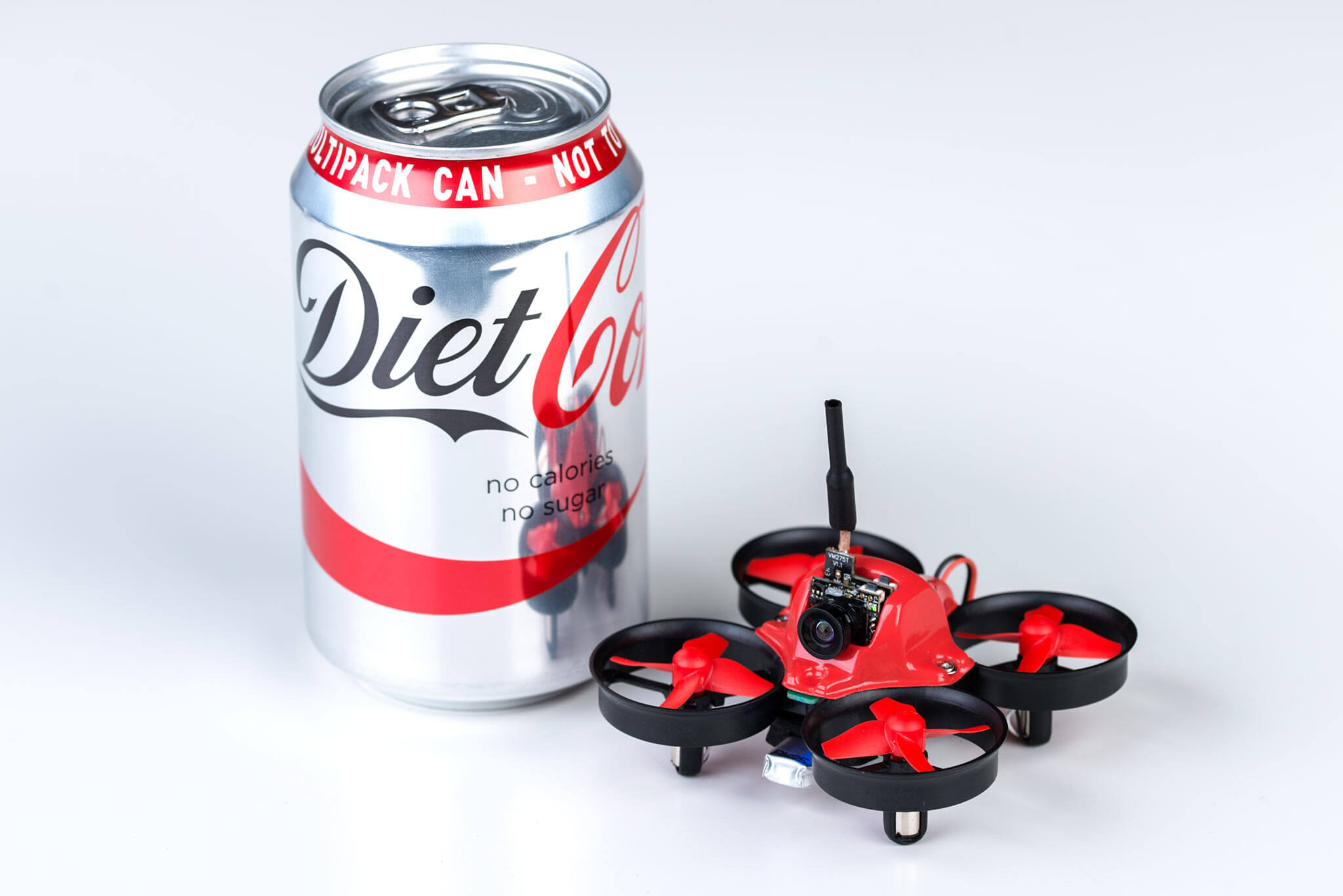
The Quadric quickly gained popularity as it was extremely durable and could fly safely indoors. Home competitions for small drones began to show interest throughout the country. Tiny Whoop soon became a generic term for any small drone. This popularity has allowed Tiny Whoop to grow, get bigger and better. The rule of thumb is that the Tiny Whoop is a palm-sized drone built on a 65-75mm frame, powered by a 1S battery. Typically, these drones weigh less than 30 grams without battery. The price of Tiny Whoop is as affordable as possible to everyone and usually does not exceed $ 100 for a high-quality FPV quad (ready-to-fly kits are offered for beginners).
Jesse Perkins is the founder of the Tiny Whoop brand, under which the Whoop quadriks ready for FPV flight, as well as the necessary components and accessories for them, are mass-produced and sold. In the past, one of the best drone racing pilots in the world.
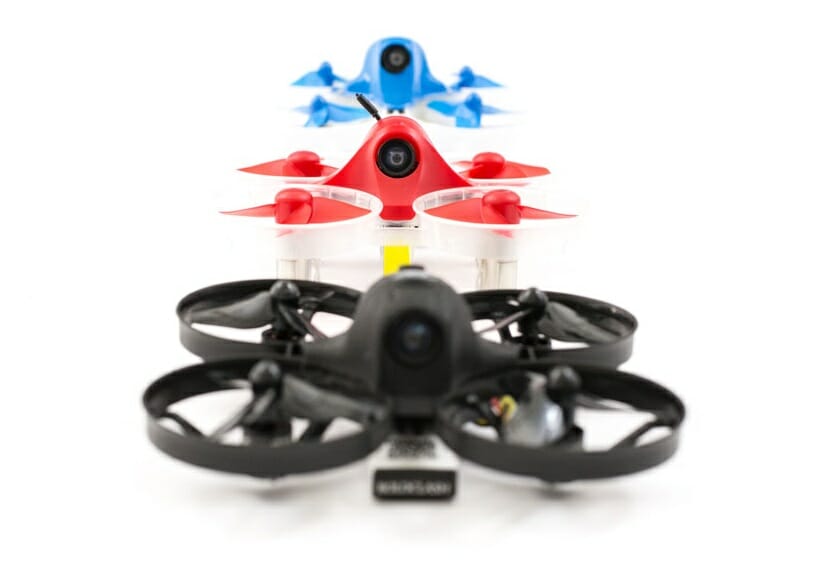
Power Whoop
Over time, the potential of collector Tiny Whoop people began to lack. Tiny Whoop is getting bigger and faster. It was from this moment that the Power Whoop originated. The first serial Power Whoop was the Mobula 7 drone, which paved the way for a small, lightweight, but at the same time powerful Whoop, capable of running on 1S or 2S batteries. When people wanted to fly on more powerful 2S and 3S batteries, the frame of these drones grew from 75-95mm in size. In fact, Power Whoop is a powerful and often larger Tiny Whoop.

* Power Whoop Mobula 7.
CineWhoop
Cinewhoop evolved from Power Whoops. This happened with the advent of FPV HD cameras. It was then that people realized that this small drone could produce impressive footage that a full-size quadcopter would not have. The Eachine Cinecan was the first off-the-shelf 4K version to achieve unprecedented hobby recognition since its announcement. On board the quad is the first hybrid FPV camera with two lenses - Caddx Tarsier. One video module which records video in HD or 4K format, and the other in real time transmits analog FPV broadcast to your goggles / helmet.
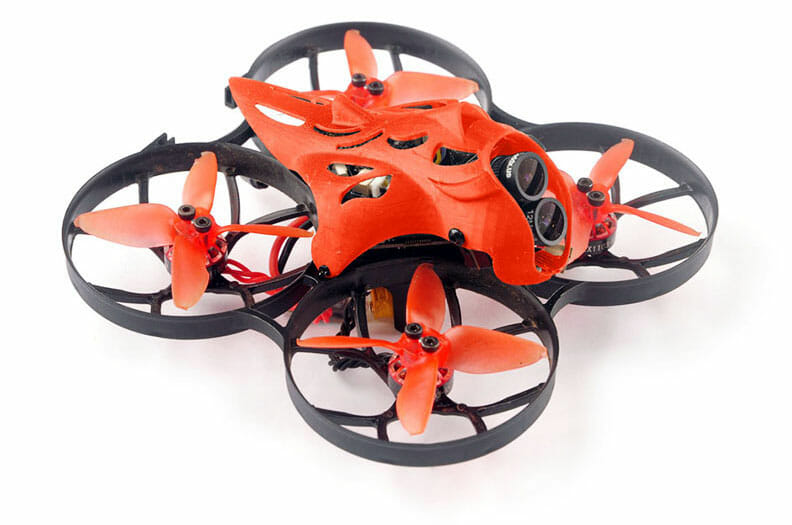
* Cinewhoop Eachine Cinecan.
Later NurkFPV and ShenDrones developed a larger CineWhoop, the potential of which allowed the GoPro to be used for more professional filming. And Eric Siegel went further and developed a unique cinematic SteadyWhoop with a 3-axis mechanical gimbal on board.
FPV toothpick drone
We owe the advent of the hobby of FPV toothpick drones to Bob Roogi, aka KabobFPV-dentist passionate about piloting light drones, one day he wanted something that could work like a full-size racing drone, but was much smaller and lighter. The first prototypes were built on the same components that were used on the Tiny Whoop drones, with the exception of the ring protection, which Bob abandoned. These small, lightweight drones were much more dynamic than the Tiny Whoop. The incredible power-to-weight ratio gave these small drones explosive flight. Popular serial Toothpick drones include Tinyhawk Freestyle and Diatone GTB2291S, 2S, 3S, 4S, and even 6S batteries. Pricing is broadly similar to the Tiny Whoop drones. Oftentimes, a good Toothpick can be purchased for around $ 100.
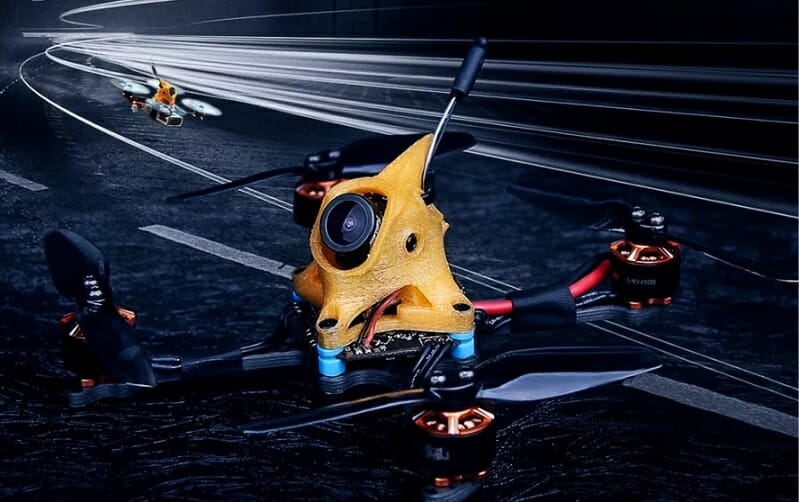
Twig drone
Twig drone is a redesigned toothpick drone. It's bigger and faster. It can handle 2S, 3S, 4S and 6S batteries. The first Twig drone was the Speed Racer Twig from Racer X FPV. Typically, Twig drones weigh between 50 and 80 grams and are equipped with 2-3 inch propellers. Looking at this trend, we can expect the emergence of the next type of drones in the near future - CineTwig.
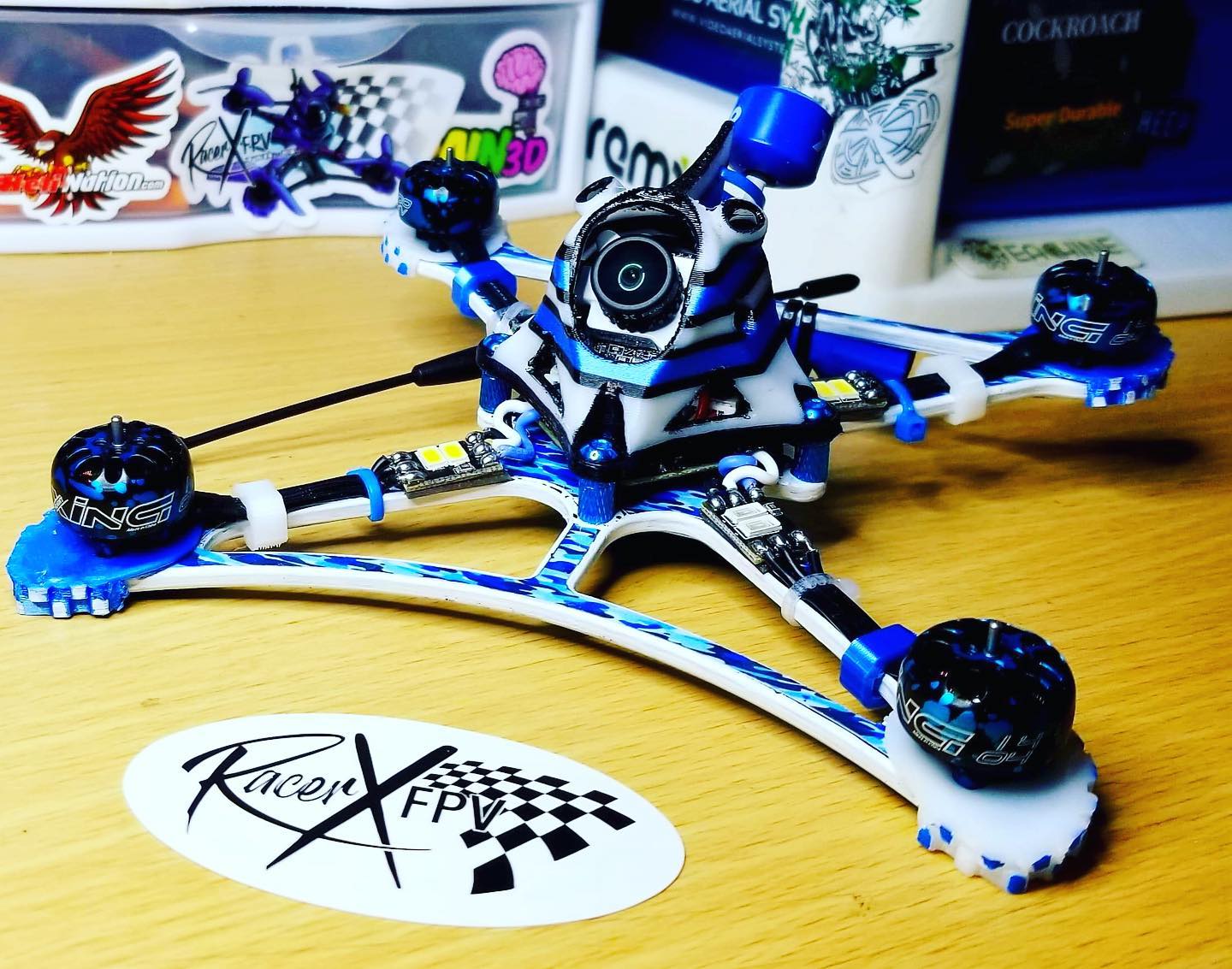
* Twig drone Speed Racer Twig from Racer X FPV.
Notes
- Often pilots refer to their racing quad for the size of the propeller. The five-inch drone has a 5 "propeller. The four-inch drone has a 4 ″ propeller. A three-inch drone has a 3 "propeller and so on. Five inches is the "standard" size for an FPV racing drone. These drones are big and very powerful. They can reach speeds of up to 160 kilometers per hour. 5-inch FPV drones are no joke. Plus, big drones come at a great price. These quads will cost the user $ 150-250 for a good beginner model.
- The new DJI digital FPV system really changed the way we fly. The new HD camera and FPV channel is fantastic, you will have an unforgettable experience with this tandem. There is only one minus - the price. A drone with such an FPV system will cost over $ 1,000. Therefore, if you are looking for a good 5-inch drone, advanced users recommend turning their attention to such quads as: Emax Hawk Pro or Hawk Sport
- If you are a beginner and are just starting to get familiar with the basics of FPV piloting, it is recommended to start with a two-inch or three-inch drones. A 4 "drone is smaller than a 5" drone, but it can easily realize the potential of a 5 "drone. Therefore, you need to start with a smaller and lighter drone. Whoop, ToothPick, and Twig are all great quads to start with. If you're new to FPV flying, start small and work your way up as your flying skills improve.
- Since any flight is associated with crashes / falls, especially for a beginner, it will not be superfluous to start practicing piloting an FPV drone using the simulator. In practice, it has been proven that this approach significantly reduces the costs of the novice pilot and helps to quickly adapt to piloting in analog / acro mode.







